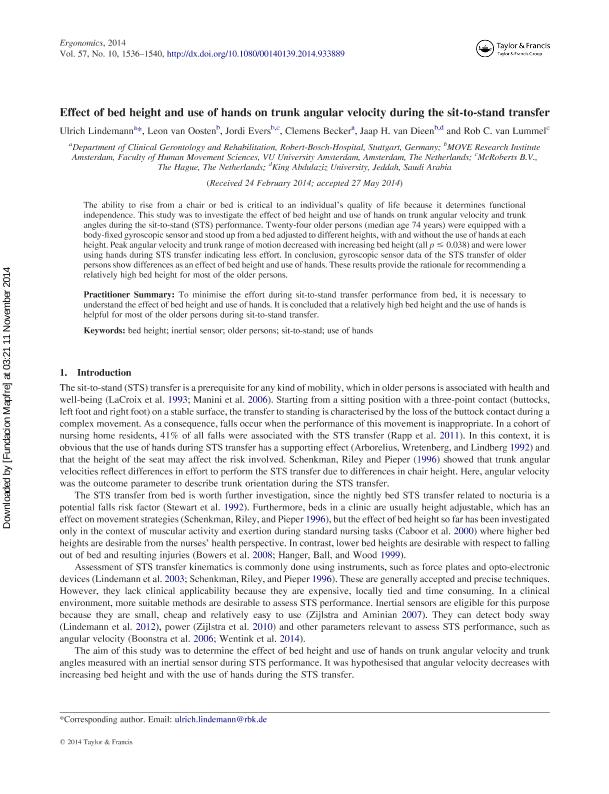Effect of bed height and use of hands on trunk angular velocity during the sit-to-stand transfer

Contenido multimedia no disponible por derechos de autor o por acceso restringido. Contacte con la institución para más información.
| Tag | 1 | 2 | Valor |
|---|---|---|---|
| LDR | 00000cab a2200000 4500 | ||
| 001 | MAP20140041213 | ||
| 003 | MAP | ||
| 005 | 20141111180106.0 | ||
| 008 | 141111e20141006esp|||p |0|||b|spa d | ||
| 040 | $aMAP$bspa$dMAP | ||
| 084 | $a875 | ||
| 245 | 0 | 0 | $aEffect of bed height and use of hands on trunk angular velocity during the sit-to-stand transfer$cUlrich Lindemann...[et.al] |
| 520 | $aThe ability to rise from a chair or bed is critical to an individual's quality of life because it determines functional independence. This study was to investigate the effect of bed height and use of hands on trunk angular velocity and trunk angles during the sit-to-stand (STS) performance. Twenty-four older persons (median age 74 years) were equipped with a body-fixed gyroscopic sensor and stood up from a bed adjusted to different heights, with and without the use of hands at each height. Peak angular velocity and trunk range of motion decreased with increasing bed height (all p = 0.038) and were lower using hands during STS transfer indicating less effort. In conclusion, gyroscopic sensor data of the STS transfer of older persons show differences as an effect of bed height and use of hands. These results provide the rationale for recommending a relatively high bed height for most of the older persons. | ||
| 773 | 0 | $wMAP20100019818$tErgonomics : the international journal of research and practice in human factors and ergonomics$dOxon [United Kingdom] : Taylor & Francis, 2010-$x0014-0139$g06/10/2014 Volumen 57 Número 10 - octubre 2014 |

